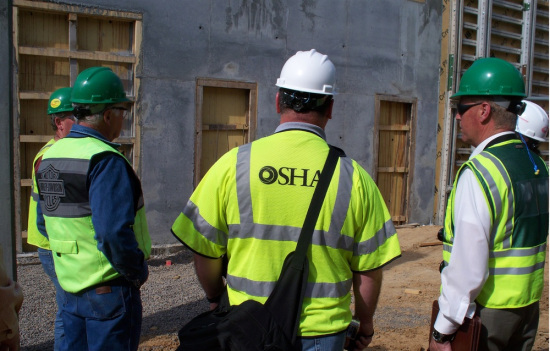OSHA Increasing Inspectors
OSHA is planning to increase its number of inspectors in 2018 to provide more comprehensive and effective inspections of construction and general industry businesses for health and safety violations. The agency is hiring 42 new full-time employees (FTEs) for enforcement and an additional 32 FTEs in areas such as compliance assistance, outreach and the Voluntary Protection Program (VPP).
OSHA has set a goal of more than 30,000 inspections for this upcoming fiscal year and will focus on “the highest-impact and most complex inspections at the highest-risk workplaces.” The agency utilizes a weighting system to determine what businesses will be selected for inspections. A known fact is that businesses with above industry average and high Total Incident Recordable Rates (TRIR) are easy targets.

What does that mean exactly?
In simple terms, the TRIR is the value used by OSHA to evaluate and quantify a company’s safety performance. Companies that meet OSHA’s record keeping requirements must calculate, report and post their TRIR value on an annual basis via its OSHA 300 & 300A Logs.
In addition, a high TRIR value is a glaring indicator of poor workplace safety. Most important, this high TRIR can quickly trigger a targeted OSHA inspection, which based on this value can be very comprehensive to include scrutiny of virtually all components of a company’s health and safety programs. To name just a few items that would be highly scrutinized include: (1) written health and safety programs, (2) emergency action plans, (3) employee training, and (4) documentation of routine jobsite/project audits and inspections to identify and correct health and safety hazards. If your company is not prepared for this type OSHA inspection then the results can lead to significant fines and penalties that add up to tens or even hundreds of thousands of dollars. This situation is not an anomaly – it happens every single day to US companies.
Not only is a high TRIR a trigger for a comprehensive OSHA inspection, it also is a big “red flag” to existing and potential customers. Companies, (i.e., clients) typically use a company’s safety record to scrutinize, qualify and potentially select a vendor they want to do business with. A high score often results in LOST BUSINESS, while a low score can result in WON BUSINESS. In summary, a low TRIR can significantly and positively impact a company’s market competitiveness and operating profitability.
Do you know your company’s Total Recordable Incident Rate and as compared to its Industry Average? If not, contact SMART Safety Group and we’ll share information on this critical safety metric that can help your company increase its productivity, profitability, competitiveness – and industry reputation.








